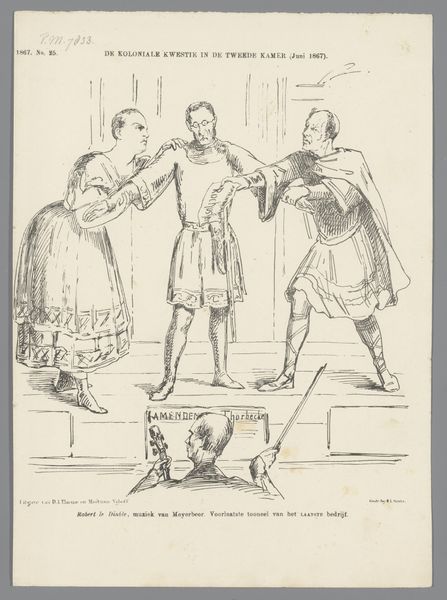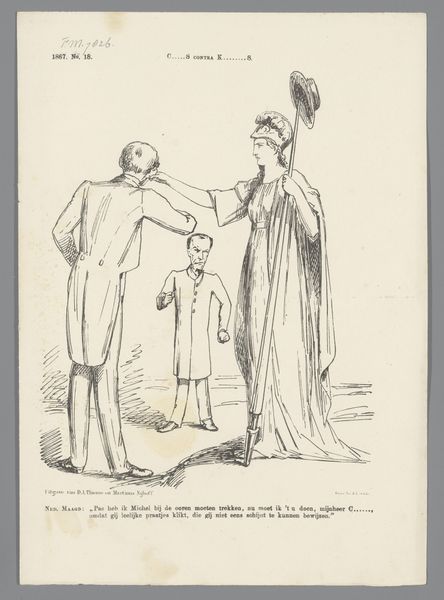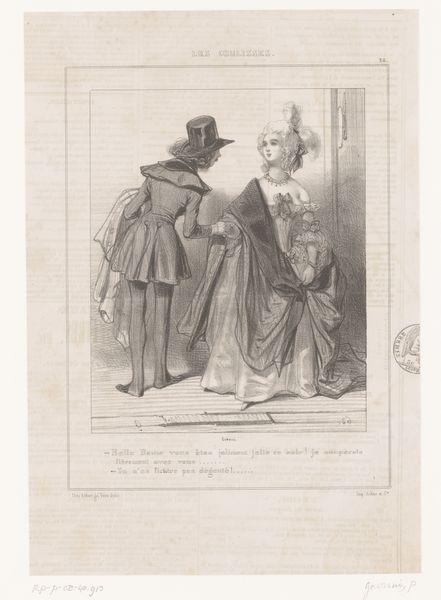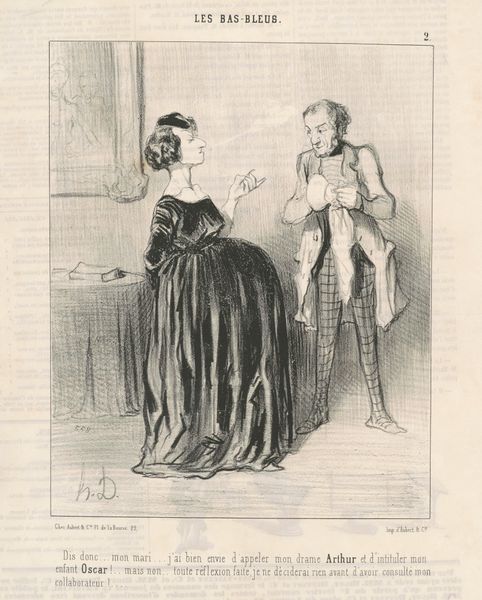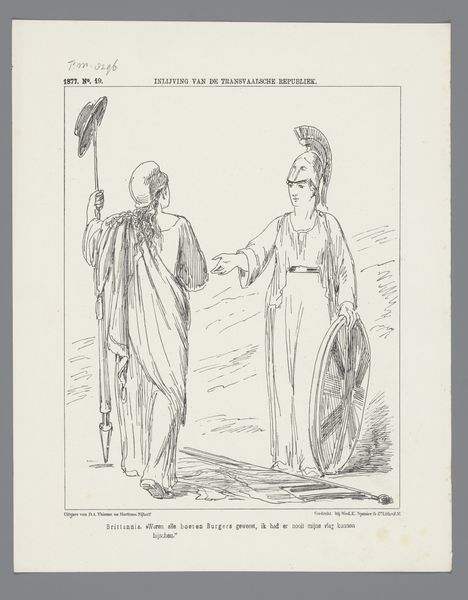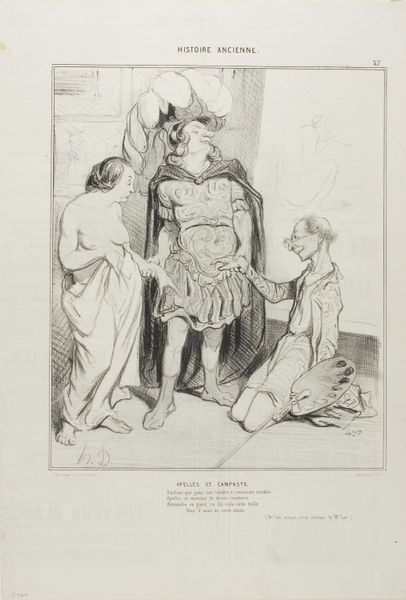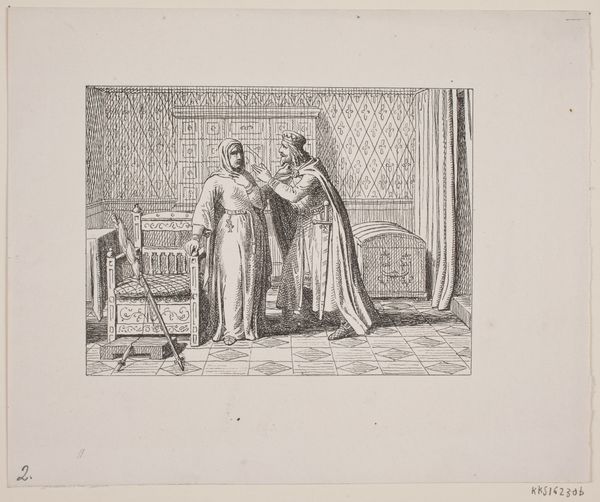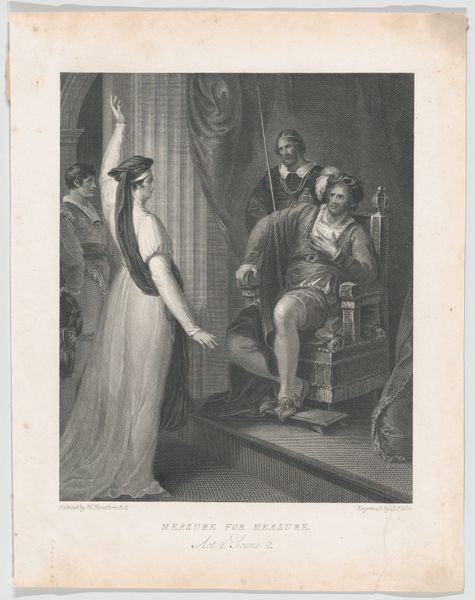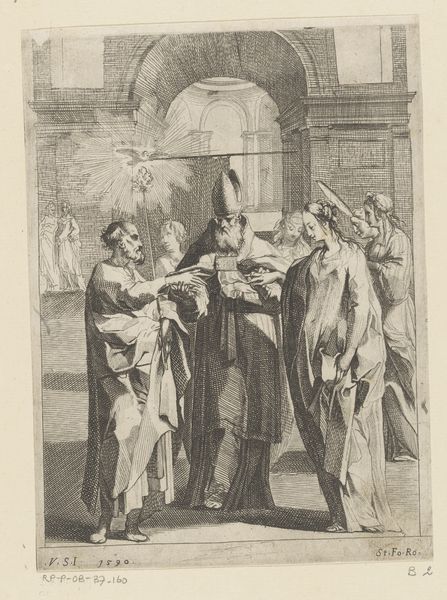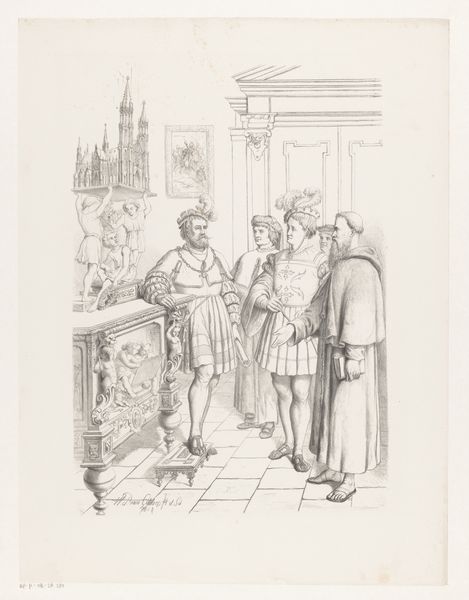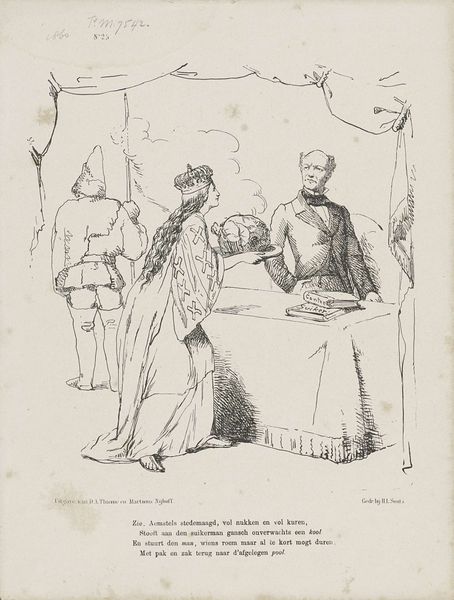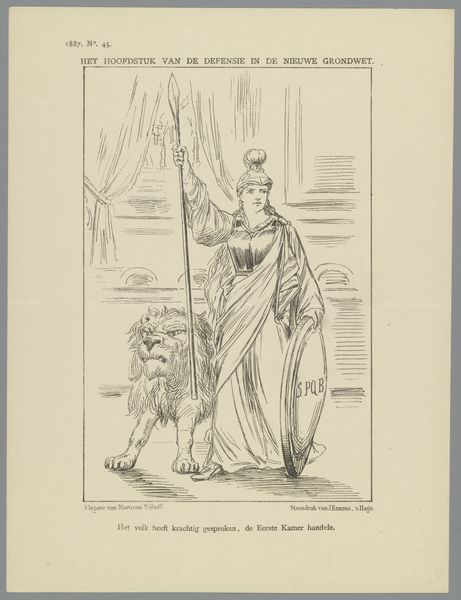
Spotprent met de ontmoeting tussen Van Zuylen en Napoleon III, 1867 1867
0:00
0:00
Dimensions: height 275 mm, width 215 mm
Copyright: Rijks Museum: Open Domain
This 1867 print by Johan Michaël Schmidt Crans depicts a meeting between Van Zuylen and Napoleon III. Both figures are conspicuously dressed in Roman attire. The laurel wreath upon Napoleon's head immediately marks him as a Caesar, a symbol of power and authority harking back to ancient Rome. This deliberate invocation of Roman iconography is fascinating. Consider how the imagery of the Roman Empire has been repeatedly revived throughout history, each time adapted to reflect new political realities. Napoleon III, in adopting this symbol, consciously aligns himself with the grandeur and dominion of Rome, seeking to legitimize his own imperial ambitions. Yet, this appropriation is never straightforward. The laurel wreath, once a symbol of triumph and imperial glory, carries the weight of history and the shadow of fallen empires. This print taps into a collective memory, a shared understanding of the cyclical nature of power, and the inevitable decline that follows the rise. The artist subtly questions the stability of Napoleon III's regime by casting him in this light, engaging us on a subconscious level with the transient nature of power.
Comments
No comments
Be the first to comment and join the conversation on the ultimate creative platform.
